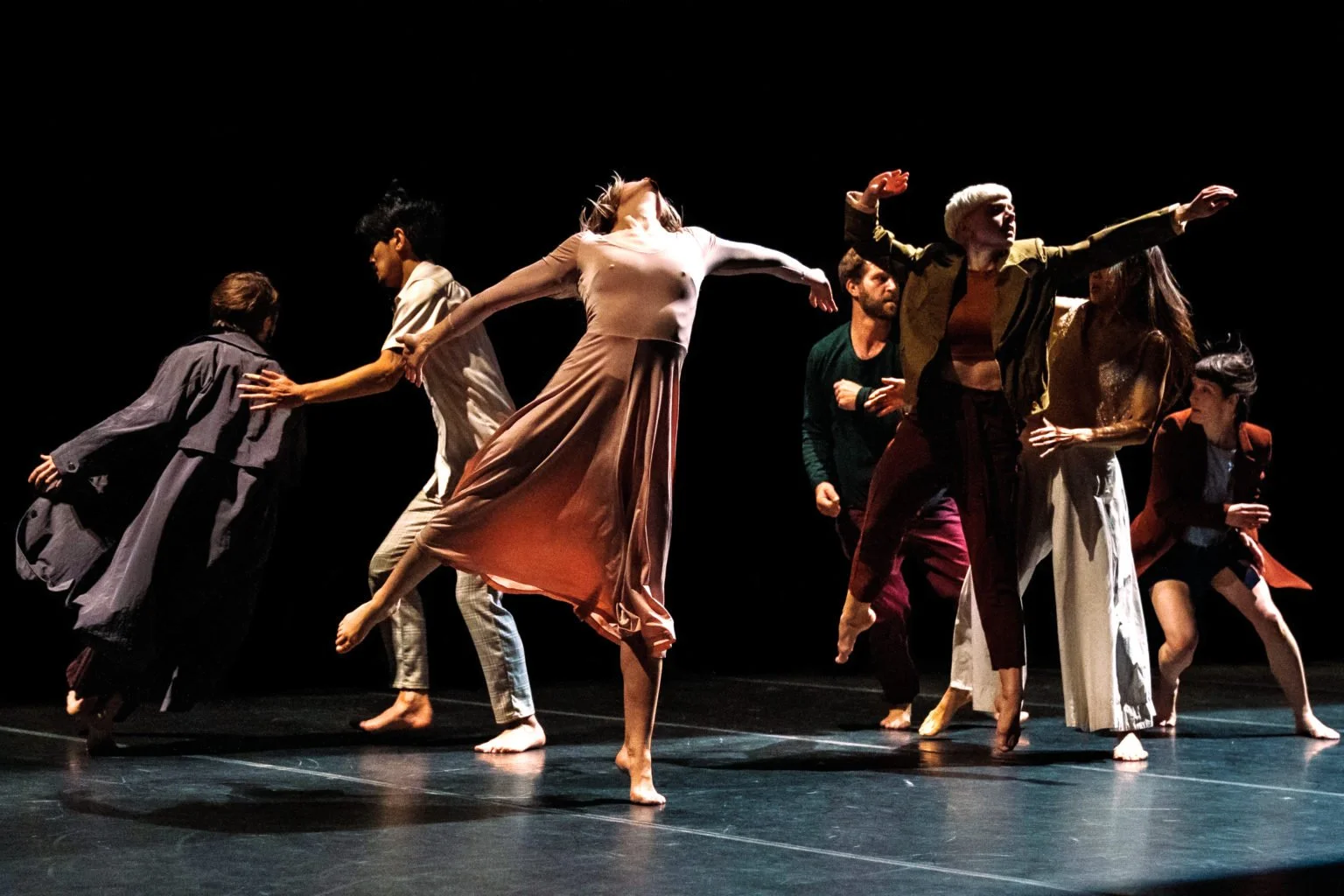Dance review: Les corps avalés takes a moving look at humanity’s harsh impulses
At VIDF, surreal set touches and Molinari Quartet’s live music add to the emotional impact of Compagnie Virginie Brunelle’s work
Les corps avalés. Photo by Vanessa Fortin
Vancouver International Dance Festival presents Les corps avalés at the Vancouver Playhouse to March 2
WITH EXQUISITE LIVE string music and seven fiercely committed dancers, there’s a lot to recommend Compagnie Virginie Brunelle’s Les corps avalés, which opened the Vancouver International Dance Festival last night.
Brunelle has a knack for raw partnering and surreal touches. At one point a male dancer carries a woman, like a rigid doll, sideways across a runway of artificial grass, setting her upside down with her legs in the air—only briefly stopping to try to pull her skirt down before giving up. The work is emotional without being soft or sentimental, capturing the unsettling, intangible disconnect that plagues our times.
The show, with a four-night run, marks a rare appearance on the West Coast by the established Montreal choreographer’s company. The calibre of music, dancing, and choreography helps make this a production that would please anyone who packs the houses at Ballet BC or DanceHouse—not to mention this city’s strong contingent of chamber-music fans.
Playing live from a small pit in front of the stage, Montreal’s Molinari Quartet starts things off with the haunting pulsing of Pierre-Alain Bouvrettee’s cello, gradually layering on the strains of viola, and then stabbing violins. From there, the foursome travels an array of moods, care of contemporary composers like Philip Glass and Samuel Barber.
As for the dancers? Wow.
They bare their souls and commit fully to the physical and emotional demands here, crossing back and forth between fragility and harshness. In a recurring motif, a gentle repeated embrace builds to something more violent and unsettling, bodies banging and grunting, becoming a percussive rhythm of gasps. The coupling becomes brutally sexual as chests and groins pound together, over and over, but it also suggests the way we’ve lost our humanity in the way we treat each other.
At other times, dancers run across the stage to hurl themselves at the group, every sculptural body bending backward from the force of impact. And in one standout duet, powerhouse dancer Sophie Breton cradles Milan Panet-Gigon, then drops him to her knees, rolling him up again and again in her arms—a potent mix of caring and recklessness.
Humans don’t reserve their harsh treatment for each other, but extend it to the natural world, suggested in the Astroturf strips that become carpets, backdrops, and mounds that sprout a tangle of arms, hands, feet, and legs. Sometimes dancers slam them violently against the floor. At another point, performers scatter yellow seeds that catch the sepia light in striking ways—and speak to lost bounty and traditions. If these devices (with set design by Marilène Bastien) sound too literal, they’re not; Brunelle employs them sparingly and abstractly to striking effect. (The exception may be a segment near the end that suggests the earthwork and gunfire of war a bit too obviously.)
Still, the design works in tandem with the darkly beautiful musicality, the intelligence of the movement, and the palpable humanity and emotions that infuse the entire piece. There are moments of suffering, but you're left with a sense of humans resisting being swallowed ("avalés") despite the forces that threaten to devour them. ![]()













